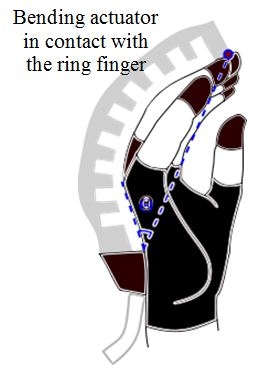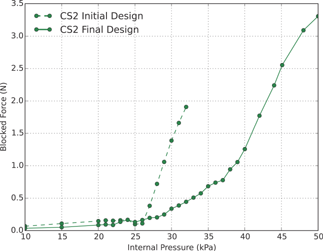Case Studies
In this section the spa_optimize_geometric_parameters design tool is used to select design parameters based on the two different applications. Researchers may follow the same procedure using this tool to answer their own design questions.
First, we define the application in terms of quantifiable design criteria constraints. Next, given an initial selection of geometric parameters, the design tool simulates the SPA to determine the selected performance characteristics. Based on the results, the design tool iterates over the parameter space using a COBYLA optimization loop. As there may be several “optimal” solutions, this optimization loop is again embedded within a global-optimization basin-hopping algorithm, which searches for new optimal solutions by permutating the parameters to find new starting points for the COBYLA loop.
In this way multiple unique designs meeting the design criteria can be discovered with only one single starting point from the user. A design is then selected, implemented, and tested experimentally in order to validate the approach. The two case studies presented here show application of the design tool for a multi-test single-optimization of a linear SPA for soft rodent exoskeletons, and a constrained single-test multi-optimization for a bending SPA for soft hand-rehabilitation gloves.
Case Study 1: Linear SPA Design for Soft Exoskeleton
A SPA-driven exoskeleton designed for locomotor rehabilitation of mammals with neurological disorders is modeled using the SPA design tool. The soft exoskeleton is designed to guide the limbs of a rodent subject through a controlled, predefined trajectory defining a step, with motion occurring solely in the saggital plane. SPAs were chosen over electrical motors to maximize the agility of the subject during the spastic motion of the limbs. The mechanism is composed of two linear SPAs attached to a two-link chain, as shown in Figure below.

The required displacement and blocked-force are summarized in Table 1. A maximum strain constraint is also included in the optimization in order to avoid the high-strain regimes where failure occurs in the real-world. This constraint is applied as an optimization penalty for strains above the upper limit.
Table 1. Design requirements for Case Studies 1 and 2. The constraints and performance criteria are defined based on the application requirements. In Case Study 2, the actuator is allowed free displacement up to 150, beyond which the actuator is blocked in order to measure blocked-force.

The initial design parameters of the linear SPA were based on intuition and are shown in Table 1. These values serve as the optimization starting values. The geometric parameters to be optimized are the number of chambers, chamber height × width × depth, wall thickness, and inter-chamber air passage height × width. These seven parameters are reduced to five by constraining the chambers and passages to remain square (height equals width). With these five geometric parameters and the criteria and constraints in Table 1, the spa_optimize_geometric_parameters tool is able to converge toward an optimal SPA design. A plot of the performance of various designs during the optimization loop is shown below.

The plot shows three design-groupings (blue, red, and blue-green) generally provide the best displacement and force performance. The best result from each of these design groups is marked in the figure and the corresponding design parameters are given in Table 2. It is clear that the starting point, noted as “CS1 Initial” in Table 2, formed the basis for the red group of results. The optimization process was able to improve on this initial design by thickening the walls, decreasing the size of the inter-chamber tube, and reducing the depth of the chambers to improve performance. The other two designs in Table 2 are significantly different from the initial design, based on longer, thinner actuator designs determined by the basin-hopping algorithm.
Table 2. Design parameters for Case Studies 1 and 2. The initial SPA designs were built using intuition, all other designs are generated by the FEA optimization tool. Lengths in mm, masses measured experimentally on fabricated actuators.

Case Study 2: Bending SPA Design for Hand Rehabilitation Glove
The compliant and light-weight SPAs have applications in actuated gloves for rehabilitation and assistance of patients suffering from reduced mobility and strength. Currently, these gloves use bending SPAs. The actuators can apply force during flexion or extension, allowing the glove to support a wide range of functional rehabilitation tasks.

Our goal for the rehabilitative glove focuses on the repetitive training of isolated movements for functional activities of daily living (ADL). A number of hand studies in the literature provide measurements of required range of motion of the joints in the hand (i.e., grip angle of finger) and pinching forces required for a large range of functional tasks in ADL, and the requirements considered here are summarized in Table 1. The initial and optimized design parameters from the simulation are summarized in Table 2. The other four initial designs are not tested, as the simulation results already indicated that those designs were too far from meeting the requirements.
Results from the experimental testing of the initial and final design parameters are shown in Table 3 and in Figure below. The initial design bursts at 32 kPa before reaching the desired force at the grip angle of 150°. The sample based on the optimized parameters achieved goal force and stayed close to the simulation results.

